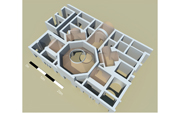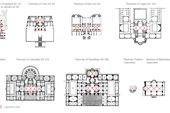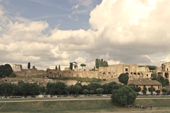Masons at Work
Ulrike Wulf-Rheidt
Deutsches Archäologisches Institut Berlin,

Ulrike Wulf-Rheidt
Deutsches Archäologisches Institut Berlin,
Still Higher and More Audacious: The Architecture of the Imperial Palaces on the Palatine in Rome
"The most important technical advances in architecture during the Roman period emerged from the combination of concrete (opus caementicium) as a building material and vaulted forms of construction. The consequence was a style of monumental spatial character best exemplified by the palaces or large Imperial baths of Rome.” (Robert Lindley Vann, 1976). The paper addresses the question of how the development of audacious and innovative vault forms at the palatial architecture and imperial baths in Rome influenced each other. For the palatial architecture of the second half of the 1st century AD we can discern two different tendencies in the conception and handling of space: firstly an experimental approach, which leads to the creation of entirely new spatial forms for example at the Domus Aurea. Barrel vaults come to be joined by innovative cupola forms and groined vaults. The rather fanciful adventurousness that is to be observed in palatial architecture in devising new ways of manipulating space comes to be replaced, at the end of the 1st century, by an eagerness for experimentation of a more technical sort. Designs betray a tendency towards ever greater, almost exaggeratedly vast spaces and complexes. This is best seen in the audacious halls of the Domus Flavia of the Domitian period. It can be shown, that experimentation with vault forms, such as is characteristic of palatial architecture of the late Neronian and early Flavian period is nowhere in evidence in the palace buildings on the Palatine until the reign of Maxentius. Also the monumental dimensions of the Flavian era were not surpassed until late antiquity.

Fig. 2. Left: Vaults of the eastern part of the Domus Aurea with the octogonal hall. Right: Vaults of the western and northern part of the ‘Sunken Peristyle’ of the Domus Augustana (Claas von Bargen, DAI Berlin).

Fig. 3. Comparison of groined vaults of the imperial baths and the palatial architecture of Rome (Ulrike Wulf-Rheidt, DAI Berlin).

Fig. 2. Left: Vaults of the eastern part of the Domus Aurea with the octogonal hall. Right: Vaults of the western and northern part of the ‘Sunken Peristyle’ of the Domus Augustana (Claas von Bargen, DAI Berlin).

Fig. 3. Comparison of groined vaults of the imperial baths and the palatial architecture of Rome (Ulrike Wulf-Rheidt, DAI Berlin).
